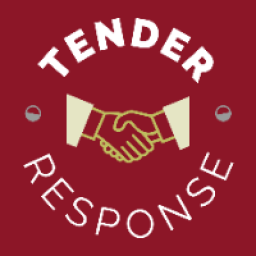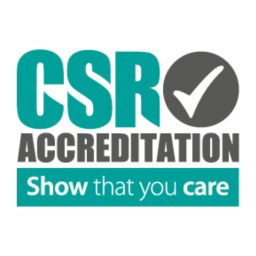Sustainability is no longer just a buzzword, it’s a strategic advantage, especially for small and medium businesses in the UK, with consumers increasingly looking for more ethical practices, resulting in those businesses that prioritise sustainability, in terms of strategy and activity, are finding themselves ahead of the curve.
But sustainability encompasses more than just an environmental responsibility; it lies at the very heart of a concept that emphasises three core elements, also known as the "Triple Bottom Line":
👥 People (social impact – from employee welfare and conditions to customer satisfaction, local community engagement and support, and sourcing materials responsibly).
🌎 Planet (reuse of materials, recycle/upcycle, reduction of waste/energy use/emissions/environmental impact, protection of dwindling resources).
📈 Profit (financial stability and longevity, market competitiveness, reduction in operating costs).
Sustainability sits at the very centre of the Triple Bottom Line, acting as a bullseye that connects how a business can create value not just for itself but also for society and the environment. By focusing on sustainable practices, organisations can align themselves with the TBL framework, creating a business model that is resilient, ethical, and growth oriented.
Hitting the sustainability ‘bullseye’ delivers an approach that can serve as an effective marketing tactic for organisations looking to build strong brand identity, enhance customer loyalty, and differentiate themselves in crowded markets.
Sustainability as a Marketing Tactic
While sustainability is inherently valuable for its impact on people and the planet, it also provides a powerful marketing opportunity for organisations. With consumers, particularly in the UK, increasingly aligning their buying habits with their own values, businesses that showcase their sustainable practices are well-placed to connect with a socially conscious audience.
Sustainability can offer:
Building Trust and Authenticity: Customers are more likely to support a business that aligns with their values so by clearly communicating your sustainable practices, you demonstrate that your company is ethical, transparent, and committed to making a positive impact, thereby helping to build trust, vital for long-term customer loyalty.
Differentiation in a Crowded Market: In today’s competitive business landscape, it’s crucial to stand out. Sustainability offers a unique selling point that can set your business apart from competitors. By making sustainability a key message, organisations can differentiate themselves in a crowded marketplace. Consumers are no longer just purchasing products, they’re buying into a brand’s story and mission, and a business that puts sustainability at the heart of its operations has a compelling story to tell.
Engaging Eco-Conscious Consumers: Research shows that a growing number of UK consumers are willing to pay more for sustainable products. By integrating sustainability into your marketing strategy, you can tap into this market of eco-conscious buyers who are actively seeking brands that match their values. In the UK, sustainability is increasingly influencing consumer purchasing decisions. Consumers, especially millennials and Gen Z, prefer to support businesses that not only provide quality products but also align with their values.
For small and medium organisations, this is an opportunity to showcase sustainable practices as a core part of their business model. Whether it’s using eco-friendly packaging, sourcing materials ethically, or supporting community projects, communicating these efforts through marketing can strengthen brand loyalty and attract conscious consumers.
Communicating your efforts across all three dimensions of the triple bottom line is key to making sustainability work as a marketing tool. When sharing your sustainability story, transparency is vital. Customers want to see authentic actions and real impacts, not just marketing spin. This can be achieved by:
- Sharing clear, measurable goals: if your business has set targets to reduce carbon emissions or waste, make sure to communicate those goals to your audience. Regular updates on progress, whether through your website, social media, or newsletters, can demonstrate your commitment to the planet and build trust with customers.
- Highlighting community and social initiatives: whether you’re offering employees fair wages and career development opportunities or contributing to local community projects, showcase these efforts as part of your "People" bottom line.
- Showcasing financial health alongside sustainability: Profit doesn’t have to come at the expense of sustainability. By showing that sustainable practices can lead to cost savings and improved business efficiency, whether through reduced energy costs, waste minimization, or improved supply chain logistics, you can demonstrate that profit and sustainability go hand in hand.
Sustainability as a Cost-Effective Strategy
There’s a common misconception that sustainability is expensive and out of reach for smaller businesses, but this couldn’t be further from the truth. Many sustainable practices actually lead to cost savings, and some opportunities for sustainable change may already exist in your business, waiting to be identified.
- Energy Efficiency: Simple steps like switching to energy-efficient lighting, minimizing water usage, and using renewable energy can significantly cut operating costs. These savings can be reinvested in other areas of the business, such as marketing or product development.
- Reducing Waste: Waste reduction not only helps the planet but also reduces disposal costs. Businesses can examine their production processes and supply chains for opportunities to eliminate unnecessary waste. For example, many UK organisations are turning to minimal or recyclable packaging, which not only reduces costs but appeals to eco-conscious customers. Consideration of the full life cycle of a product or extending the life of an offer can also aid in reducing waste, offer added value for your customers, and ensure minimal landfill or non-degradable material disposal.
- Sustainable Sourcing: Local sourcing can save money on logistics and transportation while reducing your carbon footprint. Many businesses already source local materials or work with nearby suppliers, so highlighting this as part of your sustainability strategy is a simple yet effective marketing tactic, and offers ways to boost the awareness of both yours and your suppliers’ businesses..
- Grants and Incentives: The UK government offers a number of grants and incentives to support businesses transitioning to more sustainable practices. These can help reduce the upfront costs of becoming more sustainable, making it more accessible for organisations to implement green initiatives.
The Power of Authentic Communication
For sustainability to be a successful marketing tactic, organisations need to focus on authenticity and transparency. Consumers today are adept at spotting "greenwashing", when companies falsely portray themselves as environmentally friendly without meaningful action behind the claims. That’s why it’s important to:
- 👉🏼 Be honest about your journey: No business is 100% sustainable, and that’s okay. What matters is that you’re making a genuine effort to improve and are transparent about your progress.
- 👉🏼 Use data to back up your claims: Share real, measurable results. For instance, if you’ve reduced your carbon footprint by 15% in the last year, let your customers know. This builds credibility, trust, and, of course, great marketing content.
- 👉🏼 Engage your audience: Ask for feedback from your customers and community on how you can further improve your sustainability efforts. This two-way conversation can foster deeper engagement and make customers feel like they’re part of your sustainability journey.
Conclusion: Sustainability is More Than a Trend—It’s the Future
For UK small and medium businesses, sustainability isn’t just a passing trend, it’s becoming the foundation of successful business strategy. By embracing sustainability as the centre of the Triple Bottom Line, balancing People, Planet, and Profit, organisations can strengthen their brand, attract loyal customers, and thrive in an increasingly eco-conscious market.
And it doesn’t have to be costly. Many opportunities to improve sustainability are already within reach, whether it’s reducing waste, sourcing locally, or improving energy efficiency. With clear, authentic communication, businesses can turn sustainability into their marketing bullseye, ensuring their business hits the mark for both success and social responsibility.
Is sustainability on your radar but you've not started your journey yet? Not sure where to start? Drop me a message or an email and let's chat ☕️
 Tender Response Limited
Tender Response Limited



